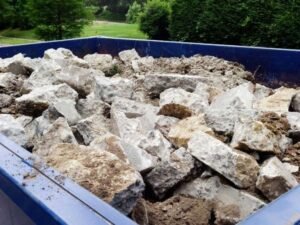I’ve spent years helping homeowners make the most of their outdoor spaces and seen firsthand how composite decking can transform a backyard. While these modern decks require less maintenance than traditional wood, they still need some TLC to maintain their beauty throughout the seasons.
In this article, I’ll share my proven tips for keeping your composite deck looking stunning year after year. You’ll learn the right cleaning techniques, how to prevent common issues like mold and scratches, and simple seasonal maintenance routines that’ll extend your deck’s lifespan. Whether you’ve just installed a new composite deck or want to rejuvenate an existing one, these strategies will help you protect your investment and enjoy your outdoor living space for many years.
Understanding Composite Decking
Composite decking has revolutionized outdoor living spaces by offering a durable alternative to traditional wood. Over the years, I’ve installed numerous composite decks and seen firsthand how they transform backyards into beautiful, functional spaces.
What is Composite Decking?
Composite decking combines wood fibers with recycled plastic materials to create weather-resistant boards. These engineered products mimic the look of natural wood while eliminating many of its drawbacks. Composite decking boards come in various textures, colors, and finishes to match different architectural styles and personal preferences.
Benefits of Composite Decking
Composite decking outperforms traditional wood in several key areas. It resists fading, staining, and scratching better than natural lumber. The boards don’t splinter, making them safer for barefoot walking and children’s play areas. Composite materials don’t require staining, sealing, or painting like conventional wood decks.
Durability and resistance to rot and decay
Composite decking withstands harsh weather conditions without warping, cracking, or rotting. The plastic component creates a moisture barrier that prevents the organic material from decomposing. This resistance to decay means your deck maintains its structural integrity even when exposed to rain, snow, and humidity for years. Unlike wood, composite boards don’t attract termites or other wood-boring insects.
Low maintenance requirements
I love recommending composite decking to busy homeowners who want to enjoy their outdoor space without constant upkeep. These decks only need occasional cleaning with soap and water to look their best. You’ll save significant time and money with:
- No annual sanding or refinishing
- No staining or sealing needed
- Simple soap-and-water cleaning
- No need for special wood treatments
- Freedom from splinter repairs
Enhanced aesthetic appeal and color retention
Composite decking retains its color and appearance far longer than wood. The manufacturing process infuses color throughout each board rather than just on the surface. Many composite decking boards feature realistic wood grain patterns that capture the beauty of natural lumber without the maintenance challenges. The color stays true even after years of sun exposure, maintaining your deck’s fresh appearance with minimal effort.
Regular Cleaning Practices
I’ve found that regular maintenance is the key to keeping composite decking looking beautiful year after year. A consistent cleaning routine prevents the buildup of dirt and debris that can cause long-term damage to your deck.
Recommended Cleaning Frequency
I sweep my composite decking boards weekly to remove fallen leaves and dirt. Monthly deep cleaning works best during heavy-use seasons like summer. I clean more frequently in autumn to address fallen leaves, while winter requires less attention except after storms.
Basic Cleaning Methods
Start by sweeping with a soft-bristled broom to remove loose debris. I rinse the deck with a garden hose to wash away fine particles. For deeper cleaning, I mix mild soap with water and scrub gently toward the grain with a soft brush.
Essential Tools and Equipment
- Soft-bristled broom or leaf blower
- Garden hose with spray nozzle
- Bucket for cleaning solution
- Mild soap or specific composite deck cleaner
- Soft-bristle brush for scrubbing
- Microfiber mop for drying (optional)
Deep Cleaning Techniques
Even with regular maintenance, your composite decking boards need occasional deep cleaning to remove built-up grime and restore their original beauty. I’ve developed a systematic approach that keeps my deck looking fresh year after year.
Specialized Cleaning Products
For deep cleaning, I use products specifically formulated for composite materials. These cleaners effectively remove dirt without damaging the boards’ protective shell. My favorites include:
- Composite deck wash concentrates (dilute as directed)
- Oxygen-based cleaners for tough stains
- Eco-friendly enzymatic cleaners for organic debris
These products penetrate better than household soaps and target the unique properties of composite materials.
Application and Scrubbing Methods
I always apply cleaners when the deck surface is cool and slightly damp. My technique:
- Pour the solution directly onto small sections (4×4 feet)
- Let it sit for 10 minutes to penetrate the dirt
- Scrub gently with a soft-bristle brush in the direction of the grain
- Work in overlapping sections to avoid dried cleaner marks
Circular motions can damage the surface pattern, so I stick to straight lines.
Rinsing and Drying
Thorough rinsing removes all cleaner residue that might attract more dirt. I:
- Use a garden hose with moderate pressure
- Rinse each section immediately after scrubbing
- Work from the house outward to prevent pooling
- Allow 24-48 hours of good weather for complete drying
I repeat the process for stubborn spots rather than increasing pressure, which protects my composite decking boards from damage.
Maintenance Tips for Long-Lasting Beauty
Maintaining composite decking requires consistent attention to preserve its appearance and structural integrity. The right maintenance routine significantly extends the life of your deck while keeping it looking fresh and inviting.
Preventative Measures
Regular sweeping prevents debris buildup that can scratch composite decking boards. I place protective pads under furniture legs to avoid surface damage. Trimming nearby plants reduces organic matter accumulation and prevents moisture retention against the deck surface. Using outdoor mats at entryways captures dirt before it reaches the deck, protecting high-traffic areas from premature wear.
Repair and Touch-Up Strategies
Address scratches on composite decking immediately with light sanding in the direction of the grain. For deeper gouges, specialized composite deck fillers match your deck color perfectly. Loose fasteners need tightening promptly to prevent board movement and potential damage. Replace any severely damaged boards by carefully removing them without disturbing adjacent sections.
Seasonal and Weather-Related Adjustments
Clean your deck thoroughly before winter to remove fallen leaves and debris. Inspect for any winter damage in spring and apply a gentle cleaning solution. During summer, rinse more frequently to remove pollen and sap. After heavy storms, check for displaced debris and standing water that might damage composite decking boards over time. In humid climates, increase cleaning frequency to prevent mold formation.
Conclusion
Maintaining composite decking boards isn’t complicated but requires consistent attention. Regular sweeping and gentle hosing prevent dirt buildup that can damage your deck over time. I’ve found that addressing spills immediately with mild soap solutions prevents stubborn stains, especially from grease and oils.
For deeper cleaning, use products specifically designed for composite materials and avoid harsh chemicals that can break down the protective shell.
Remember to check for loose fasteners seasonally and make repairs promptly to maintain structural integrity. By incorporating these simple practices into your routine, your composite deck will retain its beauty for years, requiring much less effort than traditional wood decking.










